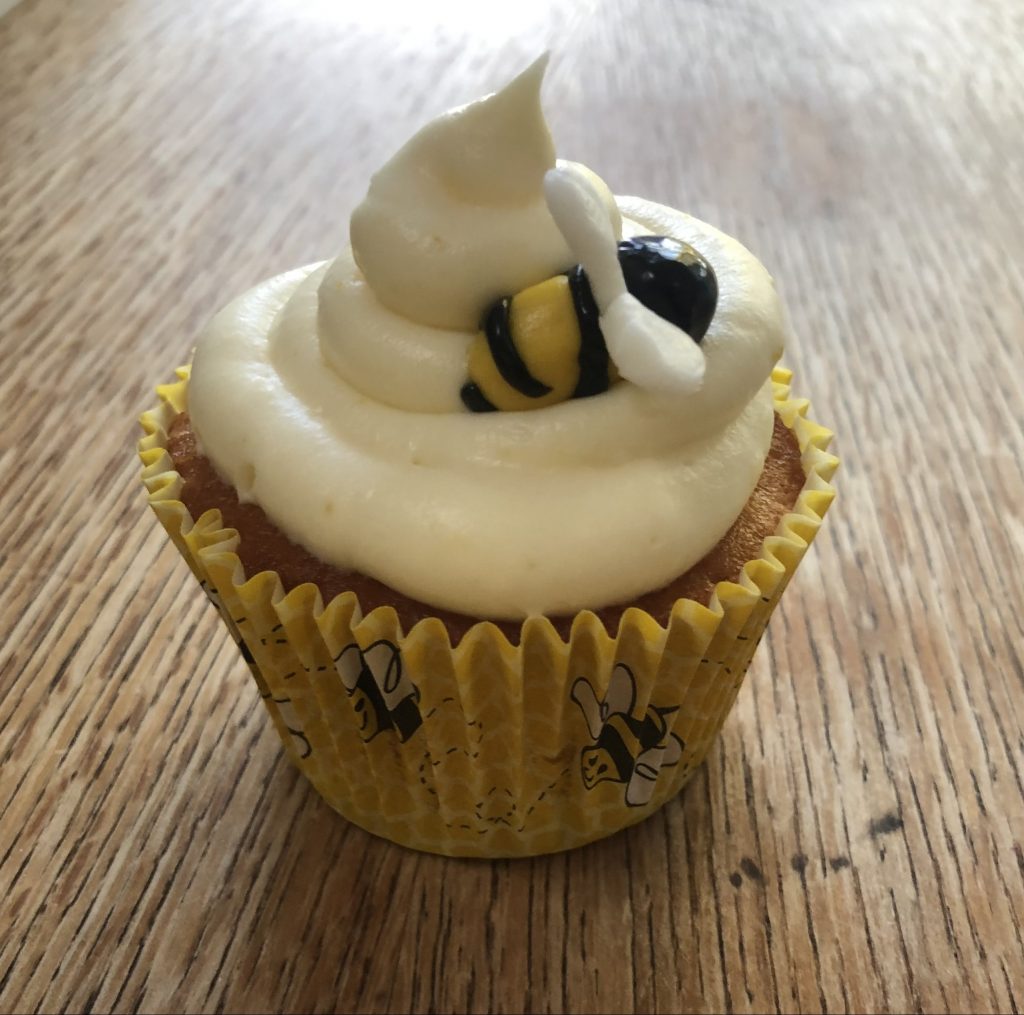
Honey & lemon Cup Cakes
Ingredients for cakes:
150g (6oz) butter, softened
100g (4oz) caster sugar
50g (2oz) floral honey from a local beekeeper 🙂
Finely grated zest of 1 unwaxed lemon
2 medium eggs, beaten
150g (6oz) self-raising flour
3 tbsp lemon juice
To Decorate:
100g (4oz) butter, softened
225g (8oz) icing sugar
100g (2oz) low fat soft cheese
1 tbsp floral honey
small tsp finely grated unwaxed lemon zest
Method:
- Preheat the oven to 190°C / fan oven 170°C / Gas Mark 5. Put 12 cup cake cases into a bun tray.
- Beat the butter, sugar and honey together until pale and creamy. Beat in the lemon zest. Gradually add the beaten eggs.
- Sift in the flour and fold it in gently, then stir in the lemon juice.
- Spoon the mixture into the cake cases.
- Bake on the middle shelf of the oven for 20-22 minutes.
- When golden transfer the cakes to a wire rack to cool.
- For the frosting, beat the butter in a bowl until smooth and creamy. Slowly sift in the icing sugar, beating well between each addition. Beat in the low fat soft cheese, honey and lemon zest.
- When not too stiff pipe or spread on top the cakes, then decorate with fondant bees or flowers – unleash your creativity!
- Share with friends and family (but you don’t have to!).

